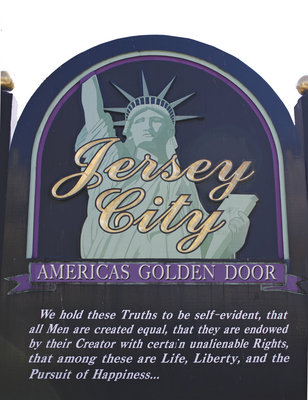The Historic Downtown Special Improvement District (HDSID) was incorporated in 1998. Its mission, according to Director of Administration Nikol Floros, is to “help businesses in the area thrive.” It’s a public/private partnership that impacts the neighborhood by improving services and promoting the area. Floros says, “It’s a quasi-government agency. I turn in a budget to the city, and the council approves it. We work with the city but are not technically part of city government.”
The Historic District SID recently experienced a funding shortfall. In past years, it has been funded by the state Urban Enterprise Zone (UEZ), but it received its final grant for $40,000 in July, which means it will have to cut programs.
“Seven days a week we ensure that the streets are clean and safe,” Floros says. This includes keeping the sidewalk clean and maintaining public areas like Mercado Park on Jersey Avenue and the Grove Street PATH area.
In general, the district encompasses Grove, Montgomery, Newark, Monmouth, Jersey Avenue, and Columbus in the downtown area. To find out the exact coordinates, visit jcdowntown.org.
The first SID was established on Central Avenue, and the downtown one came after that. Before there were SIDs, according to Floros, local merchants formed their own associations.
“We try to bring a sense of community for the citizens downtown,” Floros says. “Our mission is to be involved in local events. Jersey City is comprised of small businesses. It is important to make sure people stay here and shop locally at mom-and-pop shops.”
Steve Kalcanides, owner of Helen’s Pizza, is former president of the organization, current vice president, and one of the original creators back in the 1990s. “It’s a way to combine all the efforts of every business into one resource to be able to do special events and keep the streets clean,” he says. Before that, there was a merchants’ association. “In order to collect funds for Christmas lights, we had to go door to door, a process that was not successful,” he says.
Now, they have a presence at street fairs and on Groove on Grove. They have a sanitation crew on staff and graffiti-removal capabilities. “The look and feel of cleanliness makes it feel safer,” Kalcanides says, “and it is safer than it used to be.”
The organization has made it easier for bars and restaurants to get liquor licenses and created restaurant row, which has brought more people into the historic downtown district.
Though Nikol Floros herself has moved around a lot, including stints in New York, Texas, Arizona, South America, and Greece, she came back to JC in 2007. “I live and work here, and my kids go to school here,” she says. “We want to make the area a better place to live for all of us.”
The historic downtown district offers a lot of advantages. The historic part puts residents and visitors in touch with a culture that goes back to the Lenni Lenape and the Revolutionary War era in American history. The area thrived during a robust manufacturing period which saw the likes of Colgate and Dixon Mills when soap and pencils and sugar were king. It survived during severe economic downturns, flourished during real estate booms, and now is seeing waterfront development, an influx of new residents, a robust art scene, and lots of restaurants, bars, festivals, concerts, and farmers’ markets.
Floros is happily ensconced with her kids, who are 4 and 2, and her husband, Thimio, who is an aircraft and motorcycle mechanic.
“I love the fact that it’s ethnically mixed,” Floros says. “I love the differences in culture here, and everything is accessible. “I am able to get other people to move here when they hear how much I enjoy living here. My mom and sister live here. It’s a great community with great potential.”—JCM
